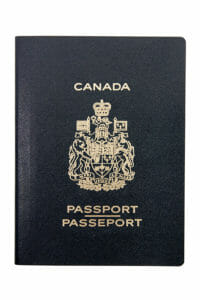
What is a small business deduction and how does it apply to associated corporations?
If you are a small business owner of a Canadian Controlled Private Corporation (CCPC), with less than $15 Million of taxable capital employed in Canada, you might be eligible for the Small Business Deduction. Under subsection 125(1) of the Income Tax Act 1985, a Small Business Deduction (SBD) is a reduction in corporate income taxes on the first $500,000.00 of taxable income. This means that your business will be taxed at a lower rate on your annual income of up to $500,000.00 or prorated for the number of days in the year if there are less than 51 weeks in that year.
SBD can highly benefit you as it allows your business to retain additional income that can be re-invested into your active business. The SBD allows for a federal and provincial income tax rate of 12.20% on the first $500,000.00 of active business taxable income, instead of 26.5%. The SBD is calculated by multiplying a corporations SBD rate by the lesser of its (1) income for the year from an active business in Canada, (2) taxable income for the year, and (3) business limit for the year. Note: active business does not include investment, rental, and leasing income.
Limitation to Section 125(1) of the Income Tax Act 1985 – Associated Corporations
Subsection 125(3) of the Income Tax Act 1985 sets a limitation to the SBD. There is a requirement on associated corporations to file an agreement to share the amount eligible for the SBD. This means that any associated corporations will share the business deduction on the first $500,000.00 in taxable income, combined. This is to prevent business owners from incorporating multiple corporations only to utilize the small business deduction.
What makes two corporations associated?
Under Section 256(1) of the Income Tax Act 1985, Corporation A is associated with Corporation B in a taxation year if:
a. Corporation A controls Corporation B, or vice-versa;
b. Both corporations were controlled by the same person(s);
Note: two corporations that are not associated with each other can still be associated by a third corporation.
c. Both corporations were controlled by different persons, those persons being related to each other, with one of the persons owning at least 25% of any class shares of the capital stock of both corporations.
d. Corporation A was controlled by a person, that person being related to group of persons who controlled corporation B, and that person owned at least 25% of any class of shares of Corporation B;
Note: Control means legal control, where ownership of shares in the corporation entitling the shareholder to more than 50% of voting shares.
Contact one of our business lawyers at Kalfa Law Firm to discuss your eligibility for a Small Business Deduction and your tax filing matters. Our business lawyers can help you maximize your benefits and profit.
-Youstina Tawadrous, Corporate-Commercial Law Clerk
Youstina is a corporate-commercial law clerk at Kalfa Law Firm as well as a Law Society of Ontario Lawyer Licensing Candidate. Tina graduated in 2020 with an LL.B in Laws from the University of Leicester after completing a BSc. at Dalhousie University.













